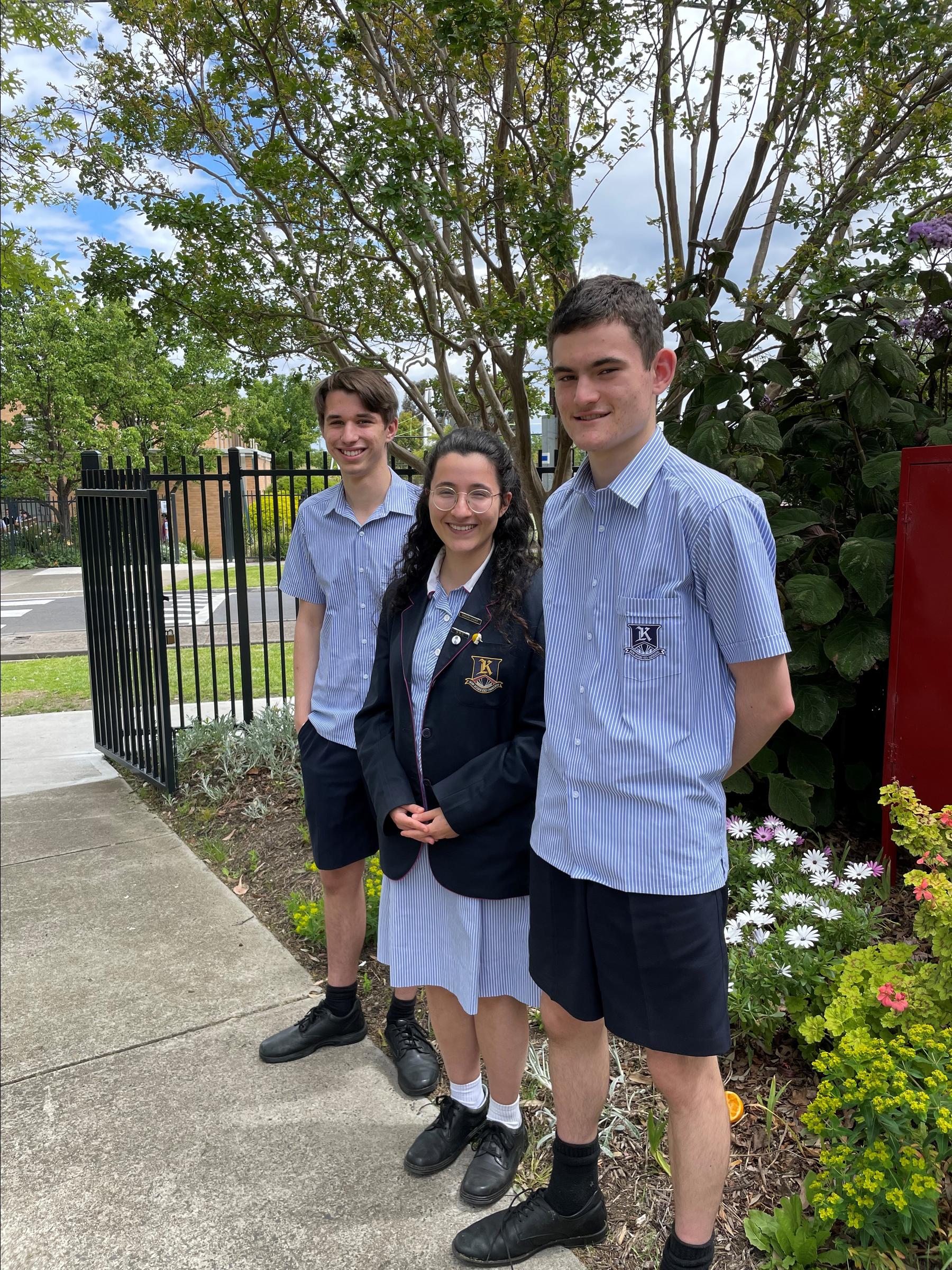From the Leadership Team

Matt Brinson, Head of Senior School
Over the past weeks, it has been wonderful to see students and staff returning to School for face-to-face teaching and learning. While this has been a time of excitement, relief and joy for many, it has also raised some concern and anxiety for others.
We know that there are many dimensions and aspects to health: physical, financial, mental, emotional, social, environmental, spiritual. When it comes to the mental aspect of health, sometimes we feel well or happy, sometimes injured or unwell, sad or anxious. And just like the physical aspect of health, the health of our mind is not static but moves on a continuum.
There are many factors, both internal and external, that affect where someone generally sits on the continuum, and also where they sit at any given point in time. The emotions, feelings and circumstances of returning from remote learning to onsite learning are among these factors.
Be You is the national mental health in education initiative delivered by Beyond Blue, in collaboration with Early Childhood Australia and Headspace. Be You has developed this mental health continuum below.
- ‘Flourishing’ represents optimal functioning; where a young person feels good, functions well, relates well with others and approaches their learning with purpose, curiosity and optimism.
- Young people who are ‘Going OK’ experience good mental health and an absence of frequent or significant feelings of distress.
- In the Struggling range, young people may show more noticeable but generally short-term periods of distress which have a mild impact on their behaviour, learning and relationships.
- Finally, young people at the far right-hand-side of the continuum have thoughts, feelings and behaviours that have a severe impact on everyday activities.
As the continuum suggests, there is no clear point that identifies poor mental health, and so it can be hard to know if to be concerned. Fluctuating along the continuum is normal. It can be an expected part of development and growing up, or an expected emotional reaction to challenging life circumstances, or the early signs of an emerging mental health condition.
WHAT CAN WE LEARN FROM THE MENTAL HEALTH CONTINUUM?
It shows that mental health is not all or nothing, and anyone can move along the scale depending on life experiences, the cumulative level of stress, levels of resilience and levels of support.
The important things to note are:
- You can go from being healthy and move along the scale until you are eventually ill.
- AND you can go from being ill through to being healthy – this is helped by being resilient and having support.
Common signs of fluctuations are reflected along the continuum below and you can see how problems and functioning change across a number of themes: Mood, Attitude, Sleep, Physical Health and Activity.
Listed below are some strategies that may help minimise the impact of life experiences such as COVID and remote learning, and how to maintain positive mental health and performance over time.
- Maintaining a positive attitude.
- Breaking work and problems into manageable tasks.
- Recognising limits and taking breaks.
- Getting adequate food, sleep and exercise.
- Making self-care a priority.
- Maintaining social connections.
- Nurturing support seeking.
It’s not our role to diagnose or make conclusions about a young person’s state of mental health. That’s what mental health professionals do. The Mental Health Continuum is merely a guide to increase our understanding of mental health, assist in determining level of concern and inform actions.
As always, if you are concerned your child may be displaying some signs for an extended period of time, please contact one of the School psychologists or your GP.
ADDITIONAL RESOURCES
Triple P – Positive Parenting Program – Victorian State Government
Triple P is a parenting program where you can get a toolbox of ideas to choose the strategies you need to understand your child’s emotions and help them bounce back.
My Anxiety Plan (MAP) for Children and Teens - Anxiety Canada - MAPS
MAP is a resource for parents and caregivers to 'coach' anxious children or teens using practical strategies and tools to manage anxiety.
A free online program which is based on cognitive behavioural therapy and designed for young people aged 8 to 17 years experiencing anxiety. They also offer a supporting program for parents.
STAFFING
Next year, Mr Samuel Thompson will join Kilvington as a Chemistry and Digital Technology teacher. He comes from Dandenong High School where he has mainly taught Chemistry, Science and Mathematics. He has been a tutor at Monash University in the subjects of Biochemistry and Molecular Biology. Sam holds a Bachelor of Science and a Master of Science in Biochemistry.
Mrs Aiko Saino has been appointed as a Japanese teacher commencing in 2022. She comes to Kilvington from Brighton Secondary College where she has been teaching for the past 13 years in the areas of Japanese and STEM. Aiko holds a Bachelor of Education from Shiga University in Japan.
Ms Clare Soler will commence next year as a Junior School teacher. Clare has worked at various schools, including Carrum Primary School and Melbourne Grammar. Clare has a Bachelor of Educational Studies and Bachelor of Teaching (Early Childhood) and is also a Bike Ed Instructor.


